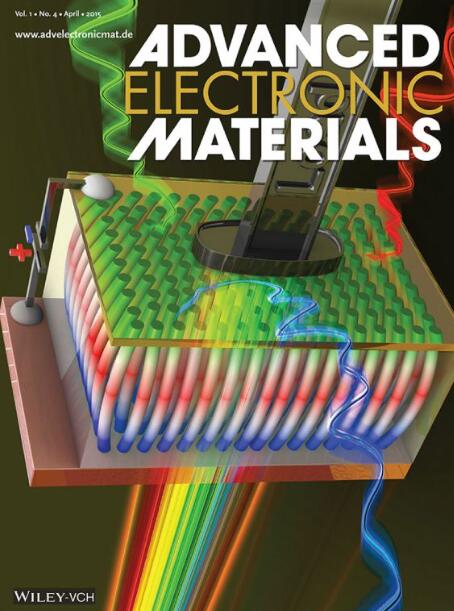提高导电聚合物薄膜电容的逐层方法
IF 5.3
2区 材料科学
Q2 MATERIALS SCIENCE, MULTIDISCIPLINARY
引用次数: 0
摘要
在追求提供高功率密度、快速充放电速率的储能器件的过程中,一种逐层沉积方法被证明可以改善导电聚合物基器件的电容性能。本文描述了一种基于聚(3,4-乙烯二氧噻吩)(PEDOT)和聚(3,4-乙烯二氧吡咯)(PEDOP)的超级电容器复合材料的合成和表征。利用循环伏安法对PEDOT和PEDOP进行顺序电聚合,形成双层结构,克服了共聚相关的挑战。电化学性能评价表明,PEDOT/PEDOP复合材料的面电容(扫描速率为5 mV s−1时为42.2±2.8 mF cm−2)优于两种均聚物高达30%。微观和光谱表面分析证实了PEDOT/PEDOP的均匀涂层和三维纳米结构形成的表面粗糙度增强,有助于提高电化学性能。进一步的电化学阻抗谱分析表明,相对于电极面积,PEDOT/PEDOP复合材料具有低电荷转移电阻(25±8 Ω)和高能量密度(在55µW cm−2时为3.53±0.3µWh cm−2),这使得PEDOT/PEDOP复合材料成为高性能超级电容器的有前途的材料。本文章由计算机程序翻译,如有差异,请以英文原文为准。

Layer-By-Layer Approach to Improve the Capacitance of Conducting Polymer Films
In the pursuit of energy storage devices offering high power density, rapid charge and discharge rates, a layer-by-layer deposition approach is shown to improve the capacitive properties of conducting polymer-based devices. This work describes the synthesis and characterization of a composite material based on poly(3,4-ethylenedioxythiophene) (PEDOT) and poly(3,4-ethylenedioxypyrrole) (PEDOP) for supercapacitor applications. PEDOT and PEDOP are sequentially electropolymerized using cyclic voltammetry to form bilayer structures, overcoming challenges associated with copolymerization. The evaluation of electrochemical performance of the PEDOT/PEDOP composite reveals superior areal capacitance (42.2 ± 2.8 mF cm−2 at the scan rate of 5 mV s−1) outperforming both homopolymers by up to 30%. Microscopic and spectroscopic surface analysis confirm the uniform coating of PEDOT/PEDOP and enhanced surface roughness resulting from the formation of 3D nanostructures, contributing to improved electrochemical performance. Further electrochemical impedance spectroscopic analysis demonstrates low charge transfer resistance (25 ± 8 Ω) and high energy density with respect to the area of the electrode (3.53 ± 0.3 µWh cm−2 at 55 µW cm−2), making PEDOT/PEDOP composite a promising material for high-performance supercapacitors.
求助全文
通过发布文献求助,成功后即可免费获取论文全文。
去求助
来源期刊

Advanced Electronic Materials
NANOSCIENCE & NANOTECHNOLOGYMATERIALS SCIE-MATERIALS SCIENCE, MULTIDISCIPLINARY
CiteScore
11.00
自引率
3.20%
发文量
433
期刊介绍:
Advanced Electronic Materials is an interdisciplinary forum for peer-reviewed, high-quality, high-impact research in the fields of materials science, physics, and engineering of electronic and magnetic materials. It includes research on physics and physical properties of electronic and magnetic materials, spintronics, electronics, device physics and engineering, micro- and nano-electromechanical systems, and organic electronics, in addition to fundamental research.
 求助内容:
求助内容: 应助结果提醒方式:
应助结果提醒方式:


